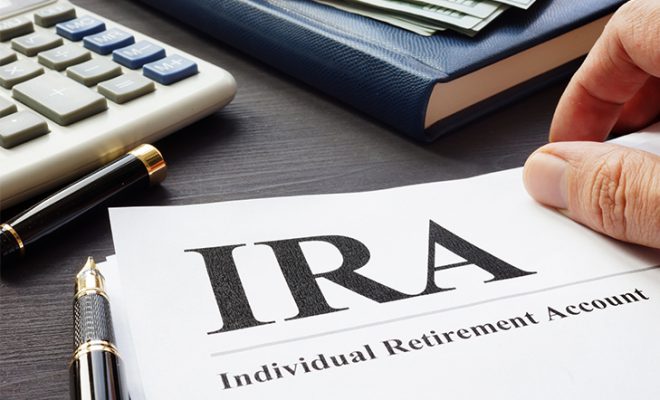10 REASONS WHY IT IS IMPORTANT TO CONDUCT A MID-YEAR FINANCIAL CHECKUP
As the year progresses, it’s easy to get caught up in your daily routine and overlook the status of your finances. While it may be common to review your finances at the beginning and end of the year, not everyone might make it a point to check the status of their finances and investments halfway through the year. However, conducting a mid-year financial checkup is crucial. From evaluating spending habits and savings contributions to monitoring investments, a check-up is a valuable opportunity to evaluate our financial situation, reassess our goals, and make any necessary adjustments to stay on track. Read below to learn why incorporating a mid-year financial checkup into your financial planning is highly advised for achieving and maintaining financial stability.
Here are 10 reasons why you should consider conducting a mid-year financial checkup:
1. To review your monthly spending
Even if you created a monthly budget at the beginning of the year, it is possible that you might be spending over the limit now. Expenses on dining, take-outs, entertainment, monthly subscriptions, travel, etc. often tend to go overboard. Moreover, you could have withdrawn funds for an emergency or a major unexpected expense, like a house repair. Hence, a financial checkup in the middle of the year can help to determine where your income is being spent and in what share. It helps to go through your bills, monthly deductions, bank statements, etc. to identify areas exceeding the budget. You can then find ways to curb your spending and stay within the planned budget. For example, if you are paying $9 a month for a music subscription and $15 a month for a streaming video service, you are paying $288 for both services annually. If this goes beyond your budget, you could choose a cable TV connection or satellite services and reduce your overall costs.
2. To evaluate your savings contributions
While planning your finances, you may have set your monthly and annual savings rates at the beginning of the year. Ideally, your savings should comprise 10-15% of your income. However, it is possible to miss the target sometimes. A mid-year checkup helps you re-think your expenses, make new adjustments, and ensure that you make up for the lost savings. Alternatively, a six-monthly assessment helps to evaluate your contributions to accounts, such as your 401(k) account, your 403(b) plan, or your IRA (Individual Retirement Account), etc. The Internal Revenue Service (IRS) often modifies the contribution limits to these accounts. Thus, a semi-annual assessment can help keep up with the new limits, allowing you to maximize your tax advantages. In 2023, the IRS announced that employees could contribute up to $22,500 in 401(k) plans.
3. To check your credit records and fees
The importance of maintaining a healthy credit score (above 750 points) is paramount to enjoying a good financial standing and reputation. Thus, it is advisable to take a half-yearly assessment of your credit reports to identify any monetary discrepancies and deficiencies. Some bureaus, like Experian, Equifax, and TransUnion, provide free credit reports every 12 months. You can check these reports for any errors or suspicious activity, or simply analyze your own activity. If you fall short on the score, you can improve by paying bills on time, keeping the deficient balance low, repaying debts, and being more cautious of your debt liability in general.
Similarly, you may have examined your bank fees and credit card charges at the beginning of the year. But often, banks and credit institutions, levy new charges, which could drain your savings silently. Thus, a mid-year financial checkup can bring attention to such charges and help you cut unnecessary fees.
4. To assess the progress of your debt repayment plans
It is beneficial to list all your debt and interest rate obligations in the middle of the year for an in-depth review. This includes your student loan repayments, mortgages, car loans, and other debts. In case you have missed a payment or are likely to miss one, it is advisable to inform your lender beforehand. This could help you save on penalties and avoid a negative credit score. Alternatively, if your mid-year review leaves you with some extra money at hand, you can use this to repay your debt obligations.
5. To rebalance investments wherever required
While many would advocate not interfering with investments and letting them be, it is good to know the value of your investment portfolio from time to time. Volatility in the stock market can have severe implications for your retirement savings accounts. Even though acting in the moment is not prudent advice, it is beneficial to assess if a strategic move can help minimize losses. For instance, you could set a stop-loss order for the sale of shares. A mid-year review can enable you to balance your portfolio as per your risk tolerance at a given life stage. For example, if you are nearing retirement in another 6 months, it is best to check if your asset allocation mainly comprises secure bonds and fewer equities. Alternatively, if you have more than 10 years left to retire, rebalancing assets to make more investments in stocks can be a good idea.
6. To evaluate your tax plans
From the time you frame your tax plans at the beginning of the year, there could have been several changes that might have impacted your final tax liability. Modifications in tax laws, changes in income, alterations in retirement contributions, etc. can alter your tax obligations. A semi-annual assessment of your taxes can help you reduce your tax burden and mitigate tax consequences. Moreover, major life changes, like marriage, having a child, getting divorced, etc. can also alter the amount of tax you pay. Hence, it is best to get a mid-year tax estimate and make adjustments accordingly.
7. To assess the status of your emergency fund
A half-yearly evaluation of your emergency fund status can help determine if there is sufficient money (at least 6-12 months of living expenses) in reserve for uncalled events. It can help you identify any changes, growth, or depletion in your fund, and enable you to adjust it according to any alterations in your financial situation, such as increased income or added responsibilities. Reviewing the accessibility and liquidity of your funds also ensures that your emergency fund is readily available and held in an account that offers competitive interest rates, thereby maximizing your savings potential.
8. To help adapt to major life changes
Changes, including moving houses, adopting new living arrangements, the birth of a child, marriage, divorce, fluctuations in income, etc. can have significant financial impacts. A semi-annual review can help you adapt your financial plan to reflect these changes. You could increase your life cover for insurance, make more investments, create a new budget, increase your contingency funds, and a lot more.
9. To review your beneficiaries
A mid-year financial check involves an assessment of all beneficiary designations. This can help you pass on your estate to suitable heirs and in the right share. Specific assets, such as an IRA, a 401(k) account, a college savings plan, annuities, mutual funds, etc. can be passed on to your nominees, in case of an untimely demise, incapacitation, or disability. Reviewing them regularly helps you match them as per your current wishes. This also ensures that your beneficiaries are updated in accordance with life events, like marriage, divorce, death of a spouse, birth or adoption of a child, etc.
10. To update your financial goals
The middle of the year is a perfect time to review your financial goals, assess if they are still achievable (given your financial situation), and take appropriate actions to stay in line with the final objective. For example, if you planned to take early retirement at 55 years, but your current financial conditions lack adequate funds for retirement, you may have to continue working for a few more years. That said, a semi-annual check is also a great time to set some new plans if you have not already done so.
To conclude
A mid-year financial checkup is not a one-time event but a habit to cultivate. By consistently reviewing your financial health and progress, it can help to make proactive adjustments and stay in control of your financial future. Even if the assessment reveals diversions from goals, overspending, piling debts, etc., there is plenty of time to bring everything back on track. If you’re looking for additional guidance while managing your financial plan and goals, consider working with a financial advisor that can provide expert guidance, personalized strategies, and valuable recommendations tailored to your unique financial situation. Use our free advisor match service to get connected with 1-3 advisors suited to help you.
















